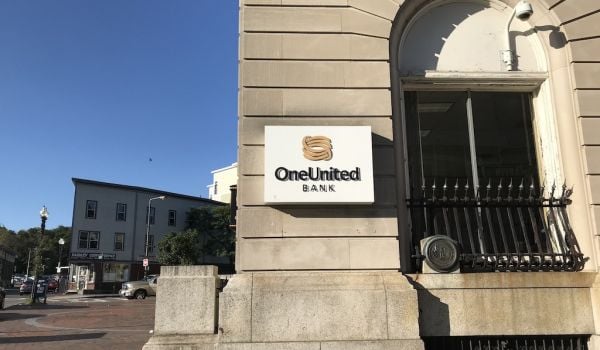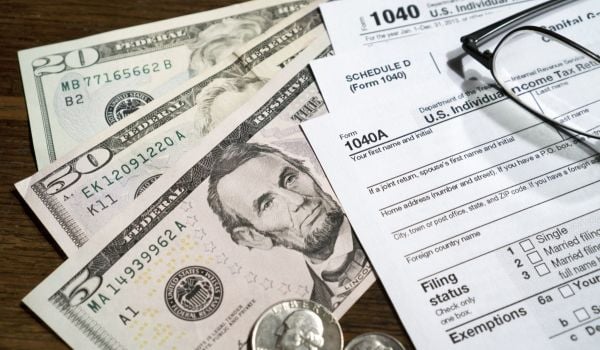Every bank, even the smallest bank, has the power to create money. Most money in circulation today isn’t currency, but ledger entries on the books of banks everywhere — though not as everywhere as there once were. In the 1980s, there were 12,000 community banks and even more credit unions across the country, each of them a little money-creating machine. Today there are less than 5,000 community banks and around 5,000 credit unions.
A 2014 paper from the Bank of England explains what banks actually do. While written for a British audience, the general concepts are the same for the United States. It contradicts the popular story of banks, that they pool savings from some folks and lend them to others.
As the paper explains, that’s not actually the case. Depositors’ dollars are always there waiting for them. When a bank makes a loan, what it’s really doing is creating new deposits and a record showing the borrower has promised to pay the bank back that amount plus interest. The borrower then spends those new dollars on whatever they were borrowing for, and those deposits end up in other accounts, maybe at other banks.
In today’s economy, and by some accounts for thousands of years, what we now call money has circulated this way.
But it’s not an unlimited power. Aside from one notable exception (The Federal Reserve), a bank’s ability to create money is limited by a whole host of what are known as “prudential regulations.” While complex, there is one essential factor: how much “equity capital” do banks have on their balance sheets. Equity capital generally comes from two places: the bank’s shareholders, and its retained earnings.
Banking regulators require banks to have one dollar in equity capital for every $11 in loans and other investments. Credit unions actually have a more flexible ratio, just one dollar for every $16 in loans and other investments. Banks typically like to have more than they’re required, just to be safe.
It’s especially challenging for banks that largely serve communities of color to raise equity capital. In response to that challenge, the FDIC is quietly taking steps to create a new investment fund of up to $1 billion that would make equity investments into banks serving communities of color or low-to-moderate income communities. It’s not the first fund ever created to do something like this, but it is a part of fulfilling a mission Congress first gave to the agency in 1989.
There has been an upswell of support this year for banks serving Black communities and other communities of color, which continue to dwindle in number. According to the FDIC, there are only 21 remaining African American Minority Depository Institutions, half as many as there were in 2002. Looking even further back, more than 130 Black-owned banks started up in the period between the end of the Civil War and the Great Depression, which wiped out many of them.
But the support for today’s surviving Black-owned banks has mostly been on the deposit side or in the form of grants to provide assistance for Black small businesses or home mortgage borrowers.
Netflix made headlines for moving $10 million in deposits to Hope Credit Union, part of an eventual two percent of the corporation’s cash deposits it plans to shift into institutions owned by and serving Black communities. PayPal moved $50 million in deposits into Optus Bank, a Black-owned bank in South Carolina. Twitter recently announced $100 million in support of organizations that lend to “Black, Latinx, Indigenous, and rural borrowers across the U.S.,” though it’s not clear yet how much of that will be in the form of deposits versus equity capital for banks.
At the consumer level, rapper and activist Michael “Killer Mike” Render recently announced the pending launch of Greenwood, a digital banking platform named after the neighborhood containing Tulsa’s “Black Wall Street,” destroyed in a deadly white supremacist riot in 1931. The platform got more than 100,000 sign-ups in its first week, the Associated Press reported. It’s not clear yet how or which depository institutions will be partnering behind the scenes with Greenwood, which has not applied for its own banking charter to hold deposits and make its own loans.
Shifting deposit accounts into Black-owned banks isn’t totally meaningless. Every bank still has to balance its books. If, at the end of the day, the bank has more loans and investments than deposits plus equity capital, it has to get more deposits or borrow from somewhere — usually other banks, or there’s the Federal Home Loan Bank system, or the Federal Reserve. The interest banks pay on deposits is usually cheaper than it pays to borrow from anywhere else. So it does help to have those deposits — especially large deposit accounts, like those from big corporations or other wealthy institutions.
As author (and Biden-Harris transition team advisor) Mehrsa Baradaran explains in “The Color of Money: Black Banks and the Racial Wealth Gap,” the relative lack of larger deposit accounts at Black-owned banks compared with white-owned banks has played a role in holding back the ability of Black-owned banks to compete. Smaller deposit accounts are relatively more volatile. Without larger accounts, day-to-day management of the bank’s balance sheet is more tedious and costly in staffing resources and in short-term interest paid to other borrowing sources.
But if you ask any smaller bank, especially a Black-owned bank, the hardest part of their job isn’t raising deposits. It’s maintaining the required equity capital.
Retained earnings are the most consistent ongoing source of new equity capital for smaller banks. But when you’re a small bank it’s a slow trickle of cash, and a bad quarter can mean a net loss of equity capital that later needs to be replaced or else there will be trouble from the regulators.
Context is a key factor for raising additional capital as a Black-owned bank. Once upon a time, business leaders in a given community could be counted upon for a quick injection of capital into the local community bank as needed. But the availability of that kind of capital is not the same in every community when communities are so segregated and Black wealth per household has always been just a fraction of white wealth per household.
Raising capital from other investors can risk losing the bank’s status as Black-owned, which can be a tough pill to swallow, as Harlem’s Carter Federal Savings Bank was forced to do in the aftermath of the Great Recession — leaving zero Black-owned banks based in New York City.
“It always comes back to raising capital,” said Doyle Mitchell, president and CEO of D.C.’s Industrial Bank, in a 2018 interview with Next City. “It’s the biggest challenge for black-owned businesses, period. Raising capital, trying to get to a scale where we can be more profitable.”
The needs are out there, even in dire times. It might actually be better to start a bank during a recession. (The industry has taken note: After years of little to no new banking charters granted at the federal level following the Great Recession, new bank charter activity has picked up again this year, fueled in part by a wave of internet-based lenders.) While other banks are hurting, a new bank with a brand new balance sheet suddenly has $11 in lending power for every $1 in equity capital.
That ratio of $11 in lending for every $1 in equity capital is part of the case the FDIC is now making for its new investment fund. The FDIC is not planning at this stage to invest any of its own dollars — it does maintain an insurance fund with $111 billion in assets, after all. Instead, it is looking to raise private capital from corporations and philanthropic sources for the new fund.
The agency considers the new investment fund part of its mission under the Financial Institutions Reform, Recovery, and Enforcement Act, passed by Congress in 1989. The act charged the FDIC and other banking regulators with preserving and promoting the creation and growth of “minority-depository institutions,” defined as institutions where “51 percent or more of the voting stock is owned by minority individuals; or a majority of the board of directors is minority and the community that the institution serves is predominantly minority.”
Up till now, that creation and promotion has mostly looked like studies and training courses and other non-financial assistance for minority-depository institutions. Earlier this year, the agency also published a new guidebook for investing in minority-depository institutions.
At least one other fund currently exists solely to make equity capital investments into banks with a specific social mission — the “Sustainability | Finance | Real Economies” or SFRE (pronounced “sapphire) Fund. It’s a creation of the Global Alliance for Banking on Values, with investments in six countries so far, but just one in the United States.
More recently — it hasn’t made investments yet — the Black Bank Fund is seeking to raise $250 million for equity capital investments in Black-owned banks.
This article is part of The Bottom Line, a series exploring scalable solutions for problems related to affordability, inclusive economic growth and access to capital. Click here to subscribe to our Bottom Line newsletter.

Oscar is Next City's senior economic justice correspondent. He previously served as Next City’s editor from 2018-2019, and was a Next City Equitable Cities Fellow from 2015-2016. Since 2011, Oscar has covered community development finance, community banking, impact investing, economic development, housing and more for media outlets such as Shelterforce, B Magazine, Impact Alpha and Fast Company.
Follow Oscar .(JavaScript must be enabled to view this email address)


















